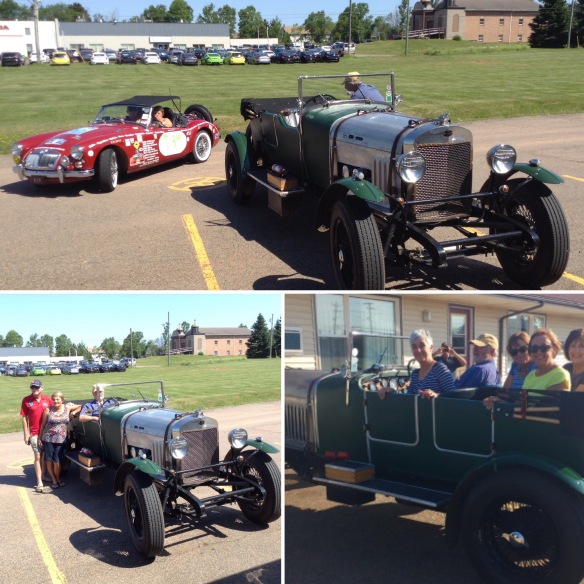Navy Car has scrubbed up well with a wash and vacuum and taken to the shipping agent’s office nearby along with RIP, Red Car and Blue B. Green Car was dropped off a few days earlier by Pete and Wendy and all are bound for Southampton UK leaving next Monday. Across the road are thousands of imported Minis, Range Rovers, Mercedes, Mazdas, Hyundais etc waiting to be trucked to new owners in Canada. I don’t think we’ve made much of an impact of Canada’s balance of trade.

Navy Car has completed the trip in great shape. The motor still sounds as crisp and feels as strong as ever and it has only used about a litre of oil since leaving Louisville around 3 weeks and 6,000 km ago. It’s handling beautifully and with a new set of tyres it will be as smooth as ever. Everything still opens and shuts nicely and there are no rattles. Just a few minor maintenance tasks ahead of us when we meet again in the UK next year. What amazingly tough cars they are.
Another reflection – Dave calculated that the total kms covered by all the people who have travelled with him over the past 6 years is around 550,000 km. Just a few minor low speed scrapes but no major incidents in all that time. We have all driven according to the conditions and observed road rules by watching how the locals drive – in some cases the rules are mandatory, in many they are discretionary, relying on the common sense of drivers and overwhelmingly this principle works. I read recently that Tesla has experienced their first fatal accident of an autonomous vehicle. Apparently the vehicle was driving itself on a two lane road in the US while the driver watched a Harry Potter DVD. Unfortunately, an 18-wheel truck made a turn across the path of the oncoming Tesla as it approached over the brow of a hill. By the time the Tesla reached the truck it was only half way through the turn and the lower half of the Tesla continued on down the road for 200 metres after the upper half was sheared off. The Tesla spokesperson reportedly said that the car’s camera would have had difficulty distinguishing the light coloured truck trailer from the sky behind it. I think I’ll stick to the MG until they get that little bug sorted.
Thanks to Dave and Laurel for inviting us to join them again and spending so much time carefully planning the trip so we get to experience so many sights and meet so many wonderful people. Thanks to all the other team members for sharing their time and skills so generously and especially to Simon and Maddy, our Tag Team friends for sharing the preparation and maintenance of the car. And of course a big thanks to my wonderful wife Lorraine who shares the ups and downs so we can pretend we are all still 25 years old again.











